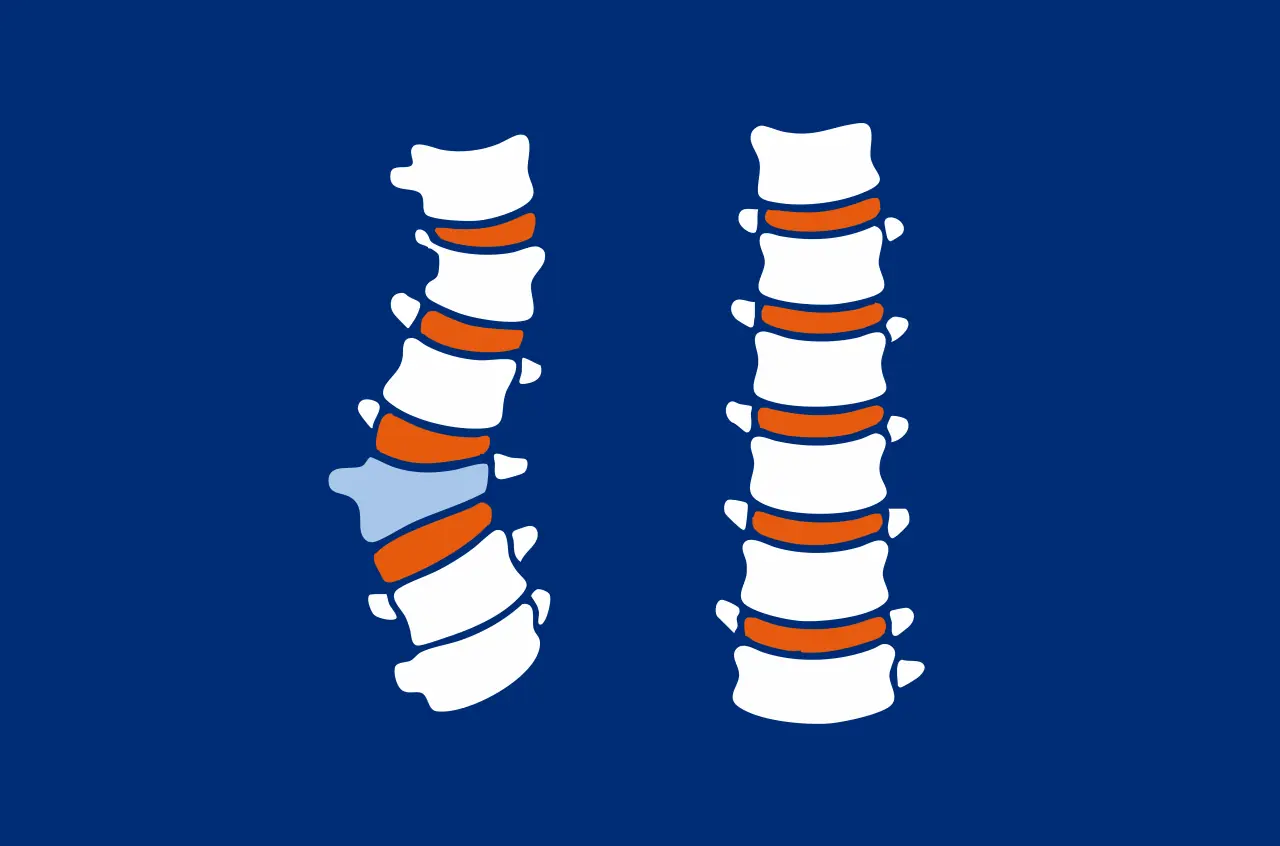To provide services at the highest level, we use cookies. Using the website requires you to choose settings related to their storage on your device. If you want to know what each type of cookie is used for, click the Details button below.
Hemivertebra – what is it and how does It affect health?15 kwietnia 2025 |

A hemivertebra is a congenital spinal malformation where only half (a wedge-shaped part) of a vertebral body forms. One side maintains normal height, while the other is practically absent. From birth, this disrupts spinal alignment and may lead to scoliosis or kyphosis. The defect develops during fetal life ? the right and left ossification centers of the vertebral body fail to fuse.
A butterfly vertebra is another, rarer developmental defect. In this case, both lateral halves of the vertebral body form properly, but a vertical cleft remains between them, filled with cartilage or an intervertebral disc. On an AP spinal X-ray, it resembles butterfly wings. This condition is often asymptomatic and discovered incidentally, although it may be associated with other anomalies, especially Alagille syndrome. The key difference: hemivertebra lacks part of the vertebral body, while in a butterfly vertebra, the body is split in two.
Isolated hemivertebra (without other anomalies) has a good prognosis. Most babies are born healthy, and future development depends largely on how quickly spinal curvature progresses. When hemivertebra occurs alongside other anomalies - like heart or kidney defects ? the prognosis worsens, as these may require treatment right after birth. Postnatal statistics show: ~25% of curvatures remain stable, 50% progress slowly, and 25% worsen rapidly. The latter usually qualify for early surgery.
It is estimated to occur in about 3 out of every 10,000 births (0.03%). Among children with congenital scoliosis, its incidence ranges from 1:1,000 to 1:2,000.
Treatment is individualized, depending on the child?s age, degree of curvature, and how fast the deformity progresses. Clinical data suggest that early resection of the hemivertebra with short-segment fusion offers the best correction results while preserving mobility. However, the risks must always be weighed ? including potential neurological or implant-related complications. Prior to surgery, medical teams also address any associated anomalies.